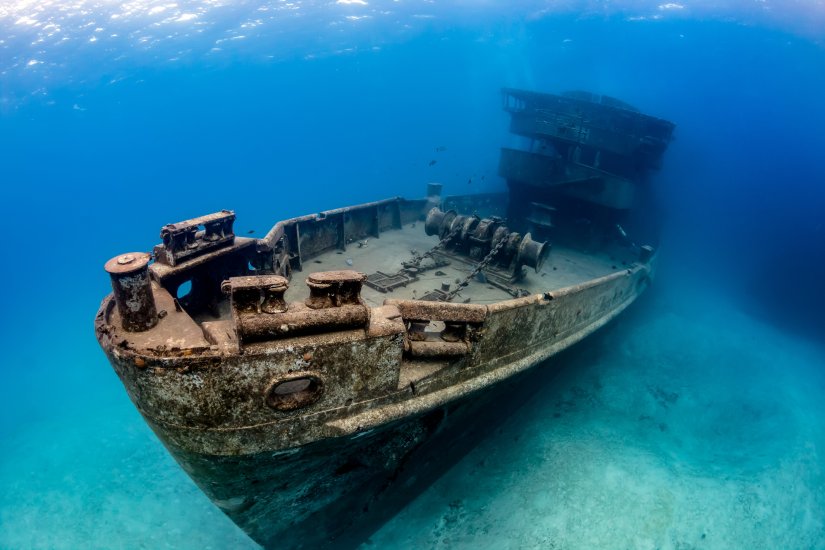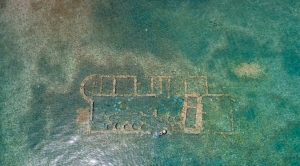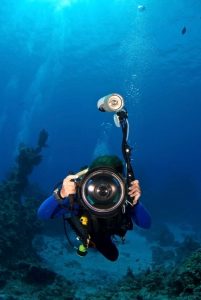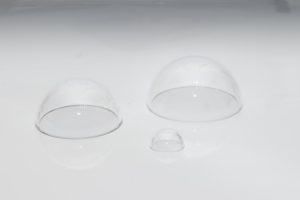Dive into the World of Underwater Archaeology Technologies and Optical Components
14th Aug 2023In light of the latest event involving OceanGate’s Titan, oceanic investigation has attracted public interest worldwide. The incident has underscored the vital need for employing appropriate materials in the construction of undersea crafts to verify safety during seabed research. Here, we examine the branch of underwater archaeology and highlight the value of optics in surveying, conserving, and studying historical relics.

Whether conducted on land or under the sea, this form of examination holds immense importance in understanding time gone by and leveraging insights to tackle contemporary issues. However, while some pioneers venture into the abyss of our waters, a vast portion does remain unmapped. Unexplored territory, characterised by extreme temperatures, limited visibility, and crushing pressure, underscores the reasoning behind UNESCO’s 2022 report that states a meagre 5% of our watery expanses have been thoroughly investigated [1].
Discovering the Hidden Cities of the Deep
In today’s era of enthusiastic globetrotters, it’s not just the Titanic that captures attention. With the growing pool of travel influencers on social media, platforms like Instagram and TikTok have become popular outlets for documenting daring escapades. Moreover, the recent introduction of Threads has presented yet another platform for explorers to showcase adventurous personas. Many users utilise these apps to share experiences of venturing our oceans and the fascinating riches they house.

Among the remarkable destinations in demand by avid adventurers are forgotten places including Ancient Egypt’s Heracleion and the under-the-sea area of Pavlopetri in Greece. However, one elusive location stays undiscovered, often considered the stuff of myth and legend: the famed lost city of Atlantis.
Ripples of the Past
Upon scouting wreckages, one interesting observation is the thriving ecosystem that has found refuge amidst debris and rubble. This natural phenomenon and the critically low levels of coral reef health have prompted marine conservationists to draw inspiration from the vibrant creatures inhabiting wrecks.
 An illustrative instance occurred in May when art installations were revealed destined for the Great Barrier Reef. These sculptures, crafted of concrete and reinforced marine-grade stainless steel, were meticulously composed to resemble specific individuals dedicated to aquatic science and conservation in Australia. The aim is for the carvings to act as habitats for sea life to colonise and thrive [2].
An illustrative instance occurred in May when art installations were revealed destined for the Great Barrier Reef. These sculptures, crafted of concrete and reinforced marine-grade stainless steel, were meticulously composed to resemble specific individuals dedicated to aquatic science and conservation in Australia. The aim is for the carvings to act as habitats for sea life to colonise and thrive [2].
Exploring the Tech
The knowledge we possess about the explored regions of our salt waters is a direct result of the advanced technologies at our disposal.
State-of-the-art equipment includes:
 Remotely operated vehicles (ROVs): These ROVs are fitted out with high-definition cameras and manipulator arms, empowering us to capture intricate shots and footage
Remotely operated vehicles (ROVs): These ROVs are fitted out with high-definition cameras and manipulator arms, empowering us to capture intricate shots and footage - Sonar systems: The most established system, the side-scan, provides comprehensive maps of the seafloor, revealing immersed features and potential archaeological sites
- Imaging technologies: For example, 3D laser scanners assist in creating accurate representations of structures and relics
- Underwater robotics: Unmanned drones and specialised bots tailored for archaeological purposes allow us to conduct meticulous and controlled excavations and surveys
- Underwater cameras: Specially designed for submersible activities, these cameras excel at capturing high-quality, high-resolution reproductions.
What Optical Components Are Used in Underwater Archaeology?
Optics enable us to perceive and navigate visually challenging environments. By harnessing the intelligence gathered, we can effectively map, document, and safeguard artefacts and historically significant sites.
Within the realm of underwater exploration, a diverse variety of applications are frequently deployed, incorporating the following as integral parts:
 Optical Filters: In certain scenarios, the properties of water – in particular, light absorption and scattering – pose challenges to image quality. To address this, imaging systems often employ filters to ensure clear range of vision.
Optical Filters: In certain scenarios, the properties of water – in particular, light absorption and scattering – pose challenges to image quality. To address this, imaging systems often employ filters to ensure clear range of vision.- Polarising Filters: More specifically, Polarising Filters help minimise unwanted reflections, enhancing image clarity
- Optical Domes: Domes are known for their ability to withstand pressure, meaning they’re commonly employed as viewing ports in submersible applications.
- Windows: Various types of windows, such as those made from BK7 (or equivalent), Sapphire, or Gorilla Glass, serve as viewports in different substrates.
Exciting Finds Making Waves in Recent Exploration
The collaboration between optics and their associated devices has played a pivotal role in unveiling some of the most captivating discoveries across the globe.
Here are a few intriguing finds from the past two years:
Ancient Pathways Resurfaced
In May, underwater archaeologists from the University of Zadar unearthed a Neolithic road in Korčula, Croatia, dating to around 4900 BC. The 4m-wide stone-slabbed path connected the submerged prehistoric settlement of Hvarka to the coast of the island of Korčula. Radiocarbon analysis of preserved wood from the site provided details of its origins.
Nautical Time Travel
Near the picturesque town of Sukošan, north of Korčula, Croatian archaeologists located a remarkably well-preserved Roman ship resting at a mere depth of 2m. Despite its age and the environment, the vessel maintained its shape, with shipworms causing the only reported destruction.
Preserving Ancient Maritime Heritage
 In July, a team of nine archaeologists from the University of Valencia embarked on an undertaking to rescue the remains of a newfound shipwreck in Murcia, Spain, before an impending storm could damage the exposed ruins. After dedicating 560 hours to investigating the craft, the group aims to recover the wreck this summer, safeguarding it from further weather-related deterioration.
In July, a team of nine archaeologists from the University of Valencia embarked on an undertaking to rescue the remains of a newfound shipwreck in Murcia, Spain, before an impending storm could damage the exposed ruins. After dedicating 560 hours to investigating the craft, the group aims to recover the wreck this summer, safeguarding it from further weather-related deterioration.
Piecing History Back Together
A Roman mosaic concealed within the sunken settlement of Baiae made headlines in 2023. Initially discovered almost four decades ago, the piece, known as the ‘Mosaic of waves,’ was lost due to changes in the seabed and was recently rediscovered. Archaeologists from CSR Restauro Beni Culturali are restoring this tilework, intending to preserve it as a submerged attraction.
Optimism on the Horizon
The future appears promising, with numerous treasures awaiting discovery. A notable endeavour involves a groundbreaking Croatian voyage set to be undertaken by two UK archaeologists. Dr Simon Fitch and Professor Richard Bates are poised to embark on an unprecedented expedition to uncover camouflaged cities beneath the sea. This pioneering mission will take them 500m from the coastline of Split into the depths of the Adriatic Sea, marking the furthest anyone has ventured into these waters [3].
 The significance of optics in pursuing such ambitious initiatives cannot be emphasised enough. At Knight Optical, our unparalleled expertise and premium-quality, custom-made optics guarantee the performance of cutting-edge tech, enabling researchers to record detailed images and videos of submerged artefacts and sites.
The significance of optics in pursuing such ambitious initiatives cannot be emphasised enough. At Knight Optical, our unparalleled expertise and premium-quality, custom-made optics guarantee the performance of cutting-edge tech, enabling researchers to record detailed images and videos of submerged artefacts and sites.
With our contribution, the field of underwater archaeology is well-equipped to continue its quest for uncovering the secrets hiding at the bottom of the ocean’s surface.
FOOTNOTES: